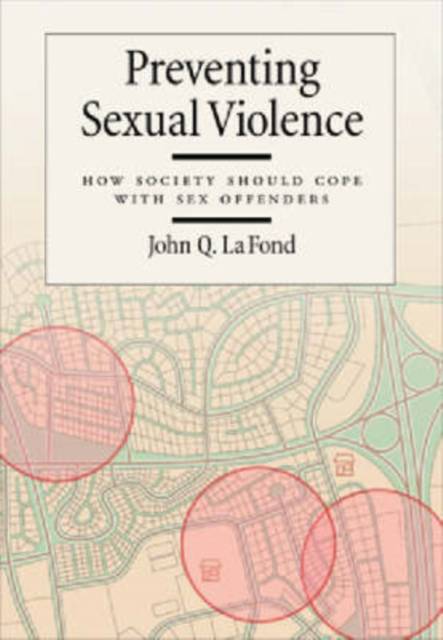
- Afhalen na 1 uur in een winkel met voorraad
- Gratis thuislevering in België vanaf € 30
- Ruim aanbod met 7 miljoen producten
- Afhalen na 1 uur in een winkel met voorraad
- Gratis thuislevering in België vanaf € 30
- Ruim aanbod met 7 miljoen producten
Zoeken
€ 35,45
+ 70 punten
Omschrijving
Preventing Sexual Violence: How Society Should Cope With Sex Offenders systematically critiques the current treatment of sex offenders in an effort to determine how best to prevent reoffending without infringing on the rights of citizens. The book offers the latest data about sex offenders and the novel and powerful legal measures enacted to prevent sexual violence. In recent years, states have initiated programs for sex offenders involving involuntary commitment, mandatory registration, community notification, and even chemical castration. The author identifies which new strategies work, which strategies are based on false assumptions, and which should be modified or abandoned. In addition to recommending ways to improve programs, the author focuses on an effective risk management program that could be expanded and reproduced nationwide. In community protection programs that use risk management, offenders receive punishment, monitoring, and control adjusted to their level of risk for reoffending. groups of sexually violent offenders pose the greatest risk for reoffending, and how to effectively reduce that risk for this population. This book provides criminal justice professionals, clinicians working with sexually violent offenders, and policy makers with a clear and realistic plan for humanely coping with sex offenders and reducing further sexual violence.
Specificaties
Betrokkenen
- Auteur(s):
- Uitgeverij:
Inhoud
- Aantal bladzijden:
- 240
- Taal:
- Engels
- Reeks:
Eigenschappen
- Productcode (EAN):
- 9781591471721
- Verschijningsdatum:
- 1/01/2005
- Uitvoering:
- Hardcover
- Formaat:
- Genaaid
- Afmetingen:
- 185 mm x 260 mm
- Gewicht:
- 743 g

Alleen bij Standaard Boekhandel
+ 70 punten op je klantenkaart van Standaard Boekhandel
Beoordelingen
We publiceren alleen reviews die voldoen aan de voorwaarden voor reviews. Bekijk onze voorwaarden voor reviews.








